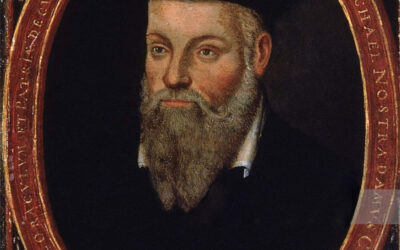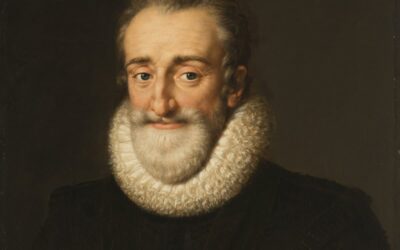France is known for its love of the arts, food, and wine. However, there’s something that’s not as well-known: The French are also responsible for many of the modern world’s inventions.
French scientists have contributed much to the modern world, with some of the greatest inventions of all time having been made in France, from antibiotics to sports to inflatable tires.
The country is a hotbed for entrepreneurialism and innovation, with the French government giving many grants for research and development. Throughout French history, inventions great and small have played a role in the modern world we have today.
As the birthplace and home of many famous inventors, scientists, biologists, and thinkers, France has been at the forefront of scientific discovery. So here are the most famous French inventors and their groundbreaking inventions. Allons-y!
1. Sterilisation and Pasteurization by Louis Pasteur – 1864
Biologist Louis Pasteur has long been renowned in France for his discoveries of the principles of vaccination, microbial fermentation, and pasteurization.

From heating up milk to sterilization and washing hands, his many experiments showed that diseases could be prevented by killing germs, leading to him being referred to as one of the “fathers of germ theory”.
His research led to breakthroughs in the understanding of the causes and preventions of diseases, which laid down the foundations of modern hygiene, public health standards, and much of modern medicine.
Among his achievements, his vaccines are credited with saving millions of lives against rabies and anthrax which was rampant during his time. The Institut Pasteur in Paris continues his work, conducting experiments in the search for vaccines and other biological and medical studies.
2. Doctor’s stethoscope by René Laennec – 1816
Physician René Laennec invented the ubiquitous stethoscope that has become so important in modern medicine. Laennec invented the stethoscope because he was not comfortable placing his ear directly onto a woman’s chest to listen to her heart.
The original was made out of wood, amplifying heart sounds without requiring physical contact.
3. Roulette by Blaise Pascal – 1720
The first form of roulette was devised in 18th century France. Many historians believe Blaise Pascal introduced a primitive form of roulette.

The current version that you see in casinos all around the world, is a hybrid version of that original wheel invented in 1720 and the Italian game Biribi, which was commonly seen in 1796 in Paris.
4. Pencil sharpener by Bernard Lassimonne – 1828
The pencil sharpener is French, however, its exact inventor is in question. The development of pencil sharpeners began in France when a book published in 1822 reported details of a pencil sharpener invention.
Before the development of dedicated pencil sharpeners, a pencil was sharpened by whittling with a knife. It would be French mathematician Bernard Lassimonne of Limoges, who would apply for the world’s first patent on a pencil sharpener in 1828 soon after those initial invention reports.
Its design was improved in 1847 by Thierry des Estivaux, another Frenchman to the design we use today.
5. Mongolfière by the Montgolfier brothers – 1783
The Montgolfière, aka a hot air balloon, was invented by the Montgolfier brothers, Joseph-Michel and Jacques-Etienne Montgolfier. Born to successful paper manufacturer parents who had 15 children, the brothers became successful aviation pioneers and balloonists.

They conducted several flights with animals, before human flight was authorized by King Louis XIV (the husband of Marie Antoinette).
The flights by the Brothers Montgolfier were a sensation and the family was soon elevated to the nobility and the hereditary appellation of de Montgolfier in 1783. It didn’t last long, however, as the French revolution struck in 1789 when French nobility lost their titles and privileges.
The Montgolfier brothers were inducted into the International Air & Space Hall of Fame in 1983.
6. Braille by Louis Braille – 1824
A blind French teenager named Louis Braille, who lost his eyesight in a childhood accident, would revolutionize the world in terms of accessibility for the visually impaired.
In 1824, at the age of fifteen, he developed a code for the French alphabet as an improvement on night writing, a previous system also invented by a Frenchman named Charles Barbier de la Serre, that had the aim of short-hand writing and code, but was not necessarily for the blind.
Braille’s system addressed several shortcomings in Barbier’s system, as he was blind while Barbier was not. In Braille, the characters have rectangular blocks called cells that have tiny bumps pressed into paper that are called raised dots. The number and arrangement of these dots distinguish one character from another.
Braille published his system, which subsequently included musical notation, in 1829. The two men became friendly as Braille grew into adulthood, keeping up a letter correspondence.
7. Mayonnaise by the Army cook of the Duc of Richelieu – 1756
According to legend, mayonnaise was created in 1756 by the cook of the French Duc of Richelieu with the only two ingredients he had available (eggs and oil) after the capture of Port-Mahon in Spain, against the English. Hence the name of “Mahonnaise“.

However, it is quite similar to the garlicky aioli sauce which could have already existed at the time in southern France and Spain, so there is a question of which came first, the chicken or the egg.
Nevertheless, the mayonnaise recipe soon began appearing in French cookbooks in the 18th century, and a culinary treat was born. You can get the recipe for French mayonnaise here.
8. Radioactivity by Henri Becquerel, Marie Curie, and Pierre Curie – 1896
Born in Paris into a wealthy family which produced four generations of physicists, Henri Becquerel is best known for discovering radioactivity in 1896 while working with phosphorescent materials.
These materials glowed in the dark after exposure to light, and he soon found from experiments that there was a form of invisible radiation that could pass through paper.
His contemporaries at the time were Polish-turned-French scientists Marie Curie and her husband Pierre Curie. They would go on to conduct many experiments, writing papers about their discoveries of the elements polonium and radium.
Marie and Pierre Curie and Henri Becquerel shared the 1903 Nobel Prize in Physics for their pioneering work developing the theory of “radioactivity”.
Marie Curie would go on to also win the 1911 Nobel Prize in Chemistry and become one of the most famous women in France. During World War I, she developed mobile radiography units to provide X-ray services to field hospitals.
In 1920 she founded the Curie Institute in Paris, (as well as one in Warsaw, Poland) which remain major centres of medical research.
Today, Marie and Pierre Curie are buried in the vaunted Panthéon in Paris, in tombs lined with lead as their bodies are still radioactive.
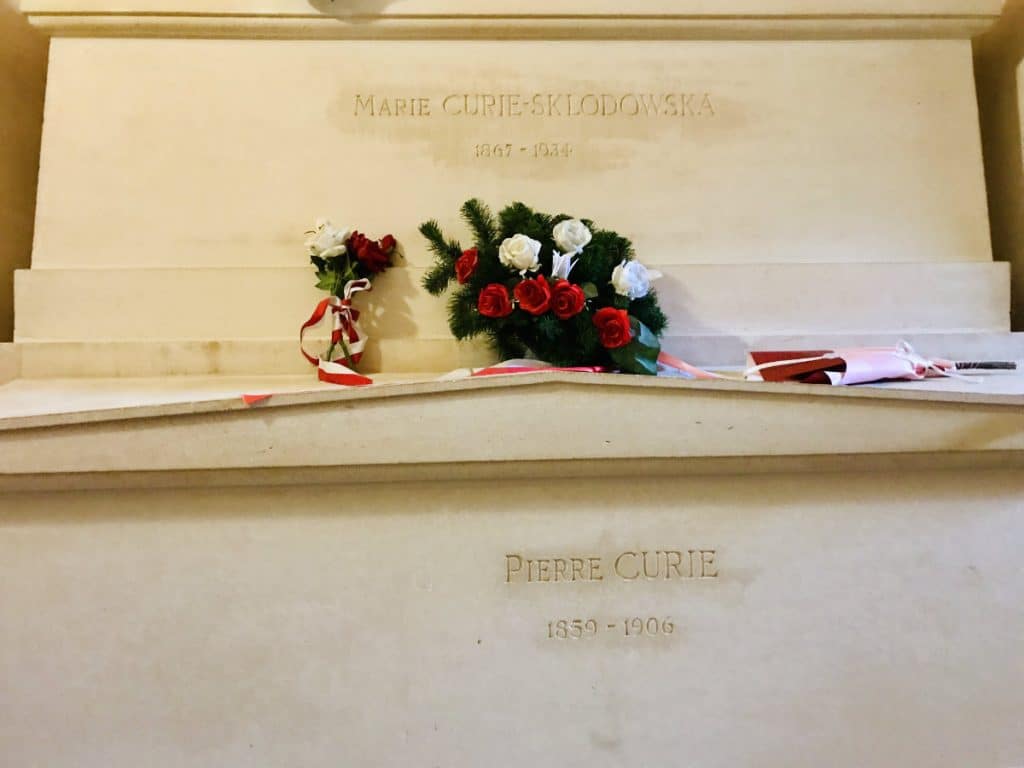
9. Hairdryer by Alexandre Godefroy – 1890
France has the capital of fashion since the days of the Sun King and the Palace of Versailles, so it is no surprise that the hairdryer would be invented in France.

In 1890, the first hairdryer was invented by French stylist Alexander Godefroy. His invention was a large, seated version that that attached to the chimney pipe of a gas stove.
It was neither portable nor handheld, but the idea of hot air being used to set and style one’s hair was an instant success.
10. Denim from Nîmes – 1800s
Staying with fashion, no one is quite sure who invented the famous fabric denim, or rather de Nîmes (meaning “from Nimes”). A city in the south of France, Nimes is a less than hour’s drive away from the Mediterranean sea.
The quintessential fabric of the jean was created in Nimes with a mixture of wool and silk devised by shepherds to withstand a hard day’s work.
11. Aqua-Lung by Jacques Cousteau – 1943
Living by the seaside in Sanary-sur-mer in a home that is still owned by his family, Jacques-Yves Cousteau created the aqua-lung, the world’s first underwater oxygen supply.
It was the first self-contained underwater breathing apparatus (or “scuba”) to achieve worldwide popularity. This class of equipment is now commonly referred to as a diving regulator or demand valve.
An earlier underwater breathing regulator, known as the régulateur, was also invented in France in 1860 by Benoît Rouquayrol.
12. The Metric system by Gabriel Mouton – 1700s
Gabriel Mouton, a church vicar in Lyon founded the metric system in 1670. French scientists at the Academy of Sciences of Paris refined it in the 1790s, and since the metric system has traversed the world.
The idea was that a unit of time should be the second, the unit of length should be either the metre or a decimal multiple of it, and the unit of mass should be the gram or a decimal multiple of it.
At the same time, French scientists and philosophers attempted the same technique with time, creating the French revolutionary calendar.

The idea was there should be 10 days in a week, 10 hours in a day, 100 minutes in an hour, and 100 seconds in a minute. This second idea was much less successful, and was soon abandoned after a few years.
The metric system on the other hand, has been adopted all around the world.
13. French Bagpipes – Middle ages
Bagpipes play an important part in French culture, with many bagpipes being developed in France including:
- the Biniou
- the bodega
- the Boha,
- the Bousine,
- the Cabrette,
- the Chabrette,
- the Cornemuse du Centre,
- the Loure
France and Scotland had a strategical liaison called the Auld Alliance in the Middle ages which undoubtedly explains some of those roots. For centuries after the Scottish guards would be the last line of defense for French Kings.
14. Cinema by Léon Guillaume Bouly and Lumière Brothers – 1890s
If you visit La Ciotat in the south of France, you will quickly realize that it is the site of the world’s first cinema by the famous Frères Lumières. You will see many names around town dedicated to the brothers who invented modern movie industry as we now know it.
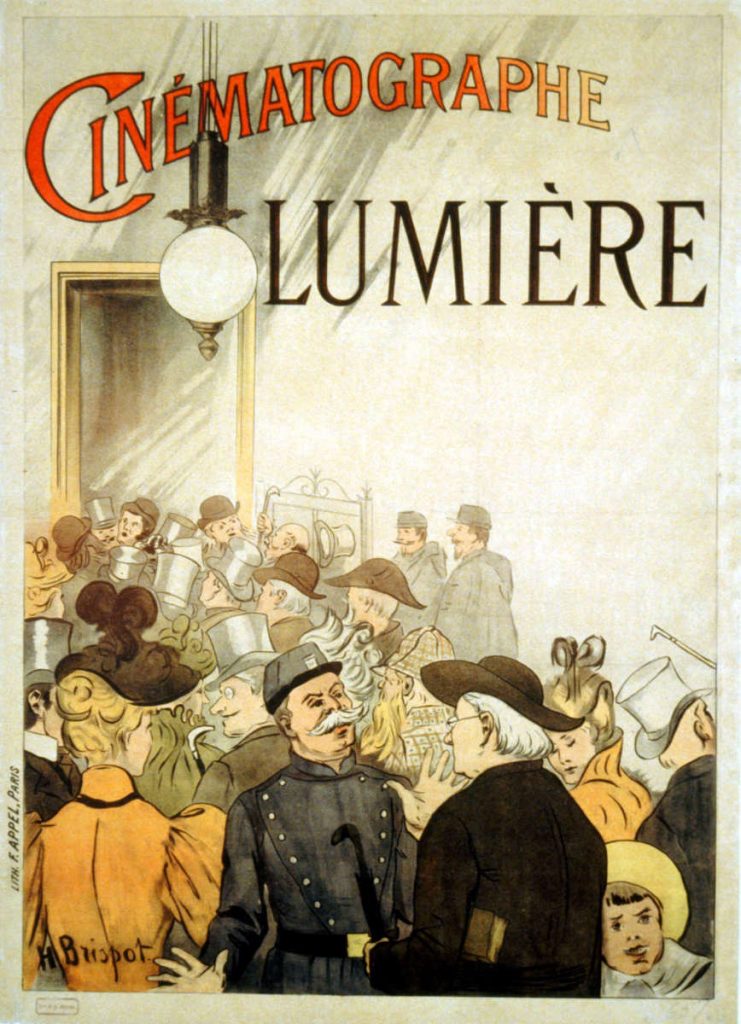
It was actually a French inventor named Léon Guillaume Bouly who invented a machine in 1892 for creating motion pictures which was called ‘the cinematographe’. In 1894, Bouly could not pay the fees for his patents, so he sold his rights to the device and its name to the Lumière Brothers, who applied it to their own device in 1895.
In 1895, when on holiday at the Palais Lumière in La Ciotat, the two brothers used their cinematographe to make what were to become the first films in world cinema history:
- L’arroseur arosé (The sprinkler sprinkled)
- Querelle enfantine (Childish quarrel)
- L’arrivée d’un train en gare de La Ciotat (The arrival of a train at La Ciotat station.)
15. Pressure cooker by Denis Papin – 1679
The Instant pot of its day was invented by the Frenchman Denis Papin in 1679, a native of the city of Blois. He invented something called “the steam digester”, which was the forerunner of the pressure cooker and the steam engine.

Sometimes called the bone digester, it is a device for extracting fats from bones in a high-pressure steam environment. The concentration of heat was so high, it also rendered them brittle enough to be easily ground into bone meal.
16. Refrigerator by Carré Brothers- 1859
Another set of scientist brothers on the list are Edmond and Ferdinand Carré. In 1850, Edmond Carré developed the first absorption refrigerator, using water and sulphuric acid.
Ferdinand continued Edmond’s work on the process and in 1858 developed a machine that used water as the absorbent and ammonia as a refrigerant.
The ancestor to the modern refrigerator, their device found much success in breweries, to keep drinks cool. Similar principles would be used to later invent the air conditioner.
17. Photography by Nicéphore Niépce – 1820s
In the mid-1820s, Joseph Nicéphore Niépce first managed to fix an image that was captured with a camera. It took at least eight hours or even several days of exposure in the camera to fix the results, and the earliest results were very crude, but the idea was there.
Niépce would die suddenly, leaving his notes to his associate, Frenchman Louis Daguerre. Daguerre went on to develop the daguerreotype process in 1839, which was the first publicly announced and commercially viable photographic process.
18. Canned foods by Nicolas Appert – 1809
The ambitions of Emperor Napoleon Bonaparte involved conquering foreign lands, for which he would need an army. An army that would need a lot of food, as it was on the move.
Napoleon offered a hefty cash award of 12,000 francs to any inventor who could devise a cheap and effective method of preserving large amounts of food.
In 1809, Nicolas Appert, a French confectioner and brewer, observed that food cooked inside a jar did not spoil unless the seals leaked, and developed a method of sealing food in glass jars. He was awarded the prize in 1810 by Count Montelivert, Napoleon’s minister of the interior.
The reason for lack of spoilage was unknown at the time, since it would be another 50 years before French scientist Louis Pasteur would demonstrate the role of germs and microbes in food spoilage.
19. Margarine by Hippolyte Mège-Mouriès – 1869
In the 1860s, tensions between Prussia (Germany) and France were as high as they ever were. War was on the horizon, so Emperor Napoleon III of France (the nephew of Napoleon Bonaparte) offered a prize to anyone who could make a satisfactory butter alternative, suitable for use by the military and the poor.
First made in France in 1869, it was created as a butter substitute by Hippolyte Mège-Mouriès from beef tallow for the armed forces and lower classes.
20. Etch-A-Sketch by André Cassagnes – 1950s
The Etch-A-Sketch toy was invented in the late 1950s by André Cassagnes, an electrician who named the toy L’Écran Magique (The Magic Screen).
The inside surface of the glass screen is coated with aluminium powder, which is then scraped off by a movable stylus, leaving a dark line on the light gray screen. The left control moves the stylus horizontally, the right one vertically, and moving both at the same time made the lines diagonal.

In 1959, he took his drawing toy to the International Toy Fair in Nuremberg, Germany. It was eventually picked up by toy producers and renamed renamed as the Etch A Sketch, becoming one of the most popular toys in the world.
21. Sewing machine by Barthélemy Thimonnier – 1830
While earlier patents for a sewing machine were issued in 1755 to Charles Fredrick Wiesenthal, the first practical and widely used sewing machine was invented by Barthélemy Thimonnier, a French tailor, in 1829.

His machine sewed straight seams using chain stitch. In 1830, he got a patent and opened the first machine-based manufacturing company in the world to create army uniforms for the French Army.
However, the workers were angry and the factory was burned down, (the French do like to protest) reportedly by workers fearful of being replaced by a machine.
22. Jeu de Paume (Tennis) by King François I – 1527s
Jeu de Paume was the ancestor to modern tennis, as we know it today. It was a royal sport, officialized by French King François I in 1527.
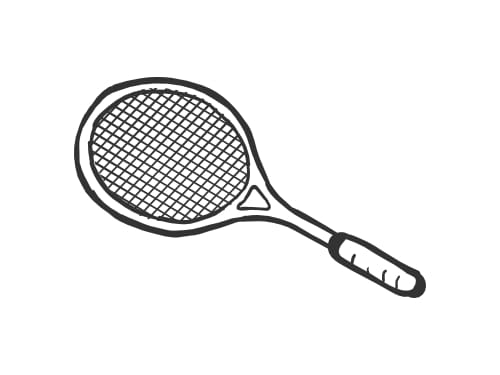
In the earliest versions of the game, the players hit the ball with their hands. Jeu de paume literally means “palm game”. In time, gloves replaced bare hands, then paddle-like bats, and finally racquets.
Today, tennis remains one of the most popular sports in France, with the Grand Slam French Open (Roland Garros) taking place annually in summer.
23. Bicycle with pedals by Pierre Michaux and Pierre Lallement – 1860s
The “dandy horse” was the first bicycle invented in 1817, but it did not have pedals. It was rather like a toddler bike is today, where the rider pushes the vehicle with their feet while steering the front wheel.
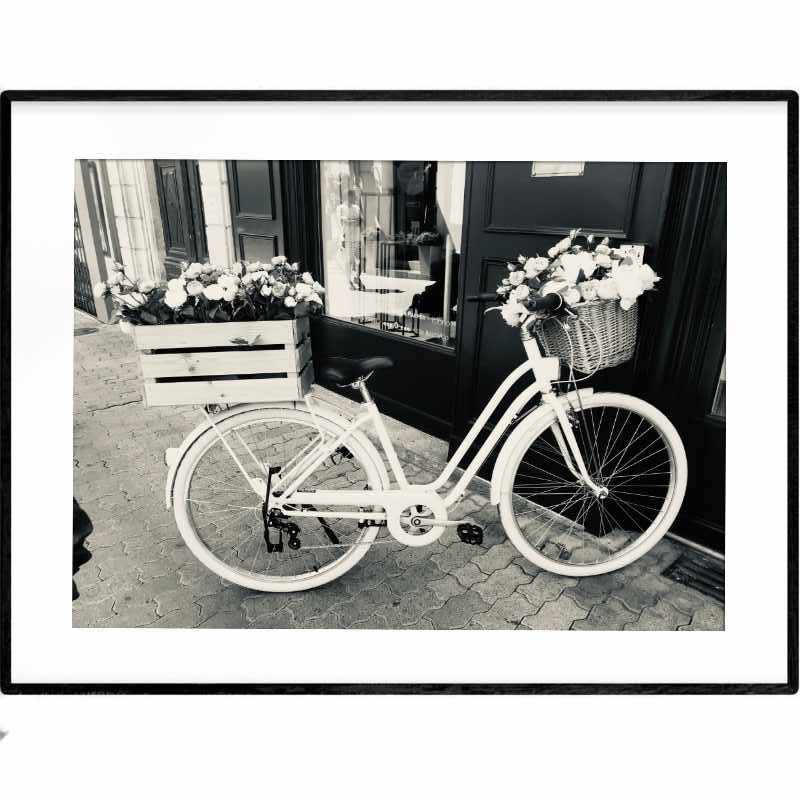
In the early 1860s, Frenchmen Pierre Michaux and Pierre Lallement added a mechanical crank drive with pedals on an enlarged front wheel.
In 1869, bicycle wheels with wire spokes were patented by Eugène Meyer of Paris. The French vélocipède made of iron and wood, developed into the “penny-farthing” with one giant wheel in the front and one small one at the back.
It would become obsolete after the invention of the modern bicycle with wheels that are more even, but the pedal power concept remains.
24. Aspirin by Charles Frédéric Gerhardt – 1853
In 1853, chemist Charles Frédéric Gerhardt treated sodium salicylate with acetyl chloride to produce acetylsalicylic acid for the first time. By 1899, the German company Bayer adjusted the formula and sold the drug under the brand name “Aspirin”.
The name stuck, with the copyright eventually giving way to the generic medecine “aspirin”. With billions of pills sold annually, it is notably on the World Health Organization’s List of Essential Medicines.
25. Calculator by Blaise Pascal – 1640
In 1640, a teenager named Blaise Pascal was co-opted into his father’s office as tax collector in the city of Rouen. Pascal was a child prodigy, and having been forced to manually work on tediously detailed calculations, he came up the mechanical calculator.
He designed the machine to add and subtract two numbers directly and to perform multiplication and division through repeated addition or subtraction.
Pascal’s calculator was especially successful in the design of its carry mechanism, which adds 1 to 9 on one dial, and carries 1 to the next dial when the first dial changes from 9 to 0. Each digit was independent, allowing multiple carries to quickly add up. The machine was initially called the Pascaline.
As Pascal grew into adulthood, he would go on to work on various mathematical concepts like probability theory and geometry, as well as gain fame as a philosopher and physicist.
26. Little Black Dress by Coco Chanel – 1920
After World War I, people wanted to let loose. The roaring 1920s would see corsets being banished and complicated dresses pushed to the back of the closet.
In 1926 Gabrielle “Coco” Chanel, the French couturier, published a picture of a short, simple black dress in American Vogue. It was calf-length and straight, and a revolution in terms of women’s clothing.

The simple design made it accessible for women of all social classes, while still being chic and attractive. The legend of the little black dress (and Coco Chanel) was born.
27. Pétanque by Paul Courtieu – 1920s
A sport that is not very popular outside of France, but is a mainstay in Provence is pétanque.
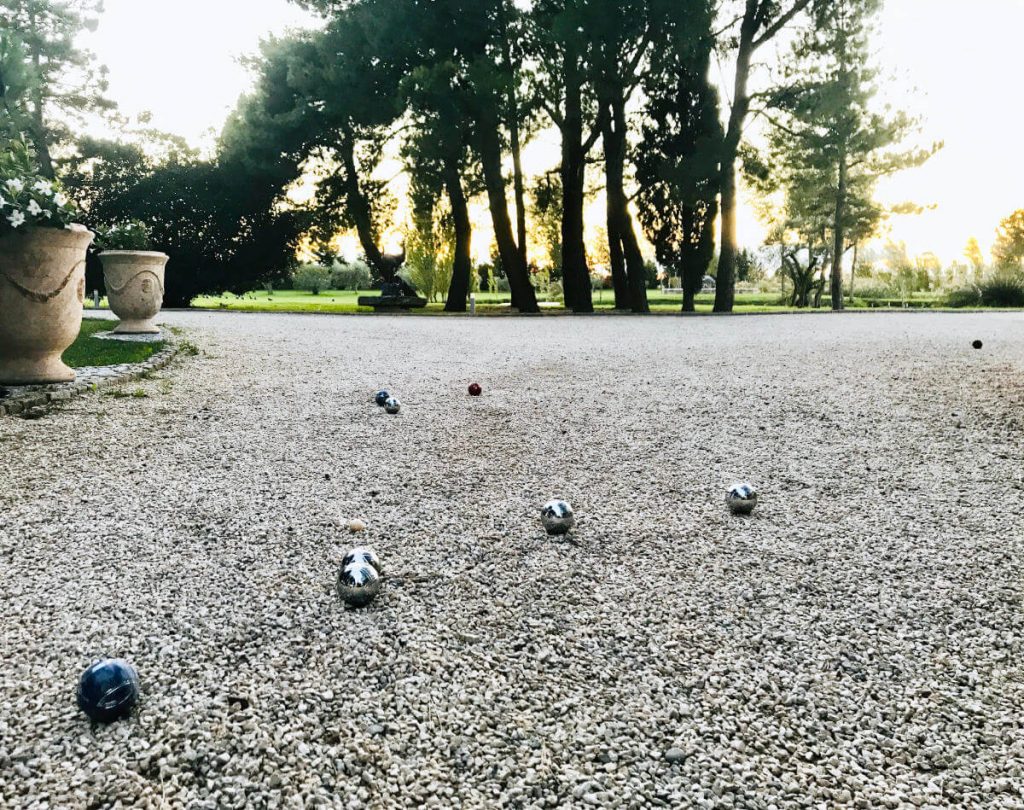
A variation of lawn bowls and the Italian game of bocce, pétanque originated in 1907 or 1910 in La Ciotat (a beach city near Marseille), in Provence.
However the previous balls were wooden and hollow, it was Frenchman Paul Courtieu who came up with the idea of heavy metal balls to control the speed and precision.
Pétanque has become so popular as a sport, there are leagues of players and competitions are carried live on sports tv channels. Today, it is as well-loved as bowling in the U.S. or curling in Canada. You can read more about pétanque and its rules here.
28. Mathematical theories by Pierre-Simon Laplace – 1749-1827
The English may have had Isaac Newton, but the French had Pierre-Simon Laplace (around 100 years after Newton). He was a French scholar whose work was important to the development of engineering, mathematics, statistics, physics, astronomy, and philosophy.
He had several mathematical theories that he was named after, including:
- Laplace’s equation,
- Laplace operator,
- Laplace transform
- Laplace distribution
- Laplace’s demon
- Laplace expansion
- Young–Laplace equation
- Laplace number
- Laplace limit
- Laplace invariant
- Laplace principle
Laplace is remembered as one of the greatest scientists of all time, exploring theories of the solar system, tidal waves, and more. He was awarded the title of Marquis in 1817.
29. Bikini by Louis Réard – 1946
Louis Réard was an automotive engineer who took over his mother’s lingerie business in about 1940. While on the beaches of Saint Tropez beaches, he noticed women rolling up the edges of their swimsuits to get a better tan, and came up with a swimsuit with the midriff exposed.
After WWII ended, a swimsuit competition began. In May 1946, another Frenchman Jacques Heim produced a two-piece swimsuit that he named the “Atome” (after the atom bomb).

Réard quickly produced his own swimsuit design which was a string bikini consisting of four triangles made from only 30 square inches (194 cm2) of fabric printed with a newspaper pattern. He had to hire a nude dancer to model it, as none of his regular models agreed to wear it.
He introduced his new swimsuit, to the media in Paris in 1946 at Piscine Molitor. It was named after the first test of a nuclear weapon at the Bikini Atoll.
30. Champagne by Dom Pérignon – 1600s
Sparkling wines have been produced in France as early as the days of the Roman Empire. The oldest recorded sparkling wine is Blanquette de Limoux, which was invented by Benedictine monks in the Abbey of Saint-Hilaire, near Carcassonne in 1531.

But the name “Champagne” became famous in France and around the world due to 2 men. The first was a monk named Dom Perignon in the 17th-century in the outskirts of Reims, who came up with the idea of matching grapes together to come up with particular notes (rather than throwing random grapes together). He also used thicker bottles which helped prevent the bottles from exploding during transport.
This was key to getting the name “champagne” known around the world, as it could now be exported. The 2nd man was his successor in the 18th-century, Dom Grossard, who proclaimed Dom Perignon as the “inventor of Champagne” to augment the prestige and the history of their church and of their sparkling wine.
31. Self-propelled Automobile by Nicolas-Joseph Cugnot – 1769
The first steam-powered vehicle was built in 1679 by Ferdinand Verbiest, a Flemish inventor as a toy for the Chinese Emperor. However, it was not meant to carry people.
While there were many subsequent variations, it would be a French inventor, Nicolas-Joseph Cugnot, who built the first working self-propelled land-based mechanical vehicle in 1769 for use by the French Army.
It was called a fardier à vapeur (“steam cart”), but was rather unstable due to its weight distribution. But the concept stuck.
Soon other inventors would get in on the action. By the 1880s saw several large-scale manufacturers began producing vehicles, particularly in France, the first being Bollée (1878), followed by De Dion-Bouton (1883), Serpollet (1887), and Peugeot (1889).
32. Modern Bra by Herminie Cadolle – 1889
Herminie Cadolle was a French inventor of the modern bra and founder of the Cadolle Lingerie House. Cadolle was a firm believer in women’s rights and was looking to reinvent the traditional corset.
At the time, both advocates for women’s rights and physicians were pointing out that not only did the corset cause physical discomfort, but it also had health complications.
In 1889, Cadolle opened lingerie in Paris where she invented a two-piece undergarment. The lower part was a corset for the stomach and waist, and the upper part supported the breasts with shoulder straps.
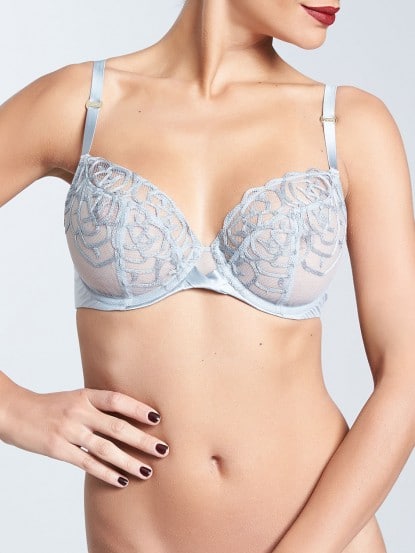
Cadolle exhibited her invention at the Great Exposition of 1900. Within a few years, just the upper half was being sold separately as modern-day bras.
33. Oxygen and Hydrogen by Antoine Lavoisier – 1778-83
Antoine-Laurent de Lavoisier was a French chemist who is most noted for his discovery of the role oxygen plays in combustion. He recognized and named oxygen (1778) and hydrogen (1783).
He also helped construct the metric system (noted above) and wrote the first extensive list of elements.
Unfortunately, he was accused of tax fraud during the 1789 French Revolution, during which he was found guilty and guillotined.
34. Modern Dentistry by Pierre Fauchard – 1728
Pierre Fauchard was a French physician, credited as being the “father of modern dentistry”. Before Fauchard, people would often go to barbers or tooth-pullers to have work done on their teeth instead of doctors.
Tooth pullers would often use crass tools to pull teeth, often pulling healthy teeth along with the problematic ones.
Fauchard wrote a book called Le Chirurgien Dentiste (“The Surgeon Dentist”), published in 1728 which turned dentistry into a science. He described everything from basic oral anatomy and function, to syptoms and operative methods for removing decay and restoring teeth. He also covered items like:
- periodontal disease (pyorrhea)
- orthodontics
- replacement of missing teeth
- tooth transplantation.
35. National air force by the French Government- 1909
In the early 20th century, the American Wright brothers were working on inventing the airplane, and it wouldn’t take long for the rest of the world to take notice.
By 1910, the first aviation force in the world was formed by the French Army, called the Aviation Militaire which eventually became l’Armée de l’Air. World War I in Europe would begin in 1914, making the airforce a mainstay in modern warfare.
36. Cure for malaria by Joseph Bienaimé Caventou – 1700-1800s
Malaria used to be a big problem in across the world, without treatment. A French explorer and biologist named Charles Marie de La Condamine, who was exploring South America would notice the cinchona tree and its medicinal qualities, a tree not known in Europe.
However it would be in 1820 that a French scientist named Joseph Bienaimé Caventou identified quinine, as the active anti-malarial ingredient in the bark of cinchona tree, and use it to treat the disease.
Even though the disease had become treatable, the cause was not clear. It was a 3rd Frenchman Charles Louis Alphonse Laveran, an army doctor, who observed parasites inside the red blood cells of infected people for the first time in the 1880s.
Laveran proposed that malaria is caused by this organism. He would go on to win the Nobel Prize in Physiology or Medicine in 1907 for his discoveries, leading to new medicines and quicker cures.
37. The Modern Parachute by Louis-Sébastien Lenormand – 1783
Louis-Sébastien Lenormand was a French inventor who pioneered the modern parachute. While there were several sketches of the parachute during the Renaissance from greats like Leonardo da Vinci, it is Louis-Sébastien Lenormand who put it into practice.
He coined the term “parachute”, from the Latin prefix para meaning “against”, and the French word chute for “fall”. On December 26, 1783, he jumped from the tower of the Montpellier observatory in front of a crowd that included Joseph Montgolfier, using a 14-foot parachute with a rigid wooden frame.
Lenormand was succeeded by another Frenchman, André-Jacques Garnerin, who made the first parachute descent from high altitude in a gondola detached from a balloon, with the help of a collapsible parachute on October 22, 1797.
38. Coffee French Press by Henri-Otto Mayer and Jacques-Victor Delforge – 1852
The first French press may have appeared in France in a rudimentary form: a piece of perforated metal or a cheesecloth attached to a rod that the user can put into a kettle. It was made by two French inventors, Henri-Otto Mayer and Jacques-Victor Delforge in 1852.

The first modern percolator incorporating the rising of boiling water through a tube to form a continuous cycle and capable of being heated on a kitchen stove was invented in 1819 by the Parisian tinsmith Joseph-Henry-Marie Laurens.
39. Submarine by Siméon Bourgeois and Charles Brun – 1863
Captain Siméon Bourgeois, who made the plans, and naval constructor Charles Brun began working on the design in 1859 at Rochefort. Until then, going underwater relied on human power for propulsion.
By 1863, they would launch the first submarine which used compressed air to move, called the Plongeur (meaning “Diver”).
40. Naval periscope by Hippolyte Marié-Davy – 1854
A few years before the submarine, in 1854, Hippolyte Marié-Davy, French chemist and inventor from the Nièvre, invented the first naval periscope.
It consisted of a vertical tube with two small mirrors fixed at each end at 45° and could be used by divers and the like.
41. Battery by Gaston Planté and Georges Leclanché – 1859-1866
There were two main types of batteries and both were invented by Frenchmen.
In 1859, Gaston Planté invented the lead-acid dry cell, the first rechargeable cell battery.
A few years later, in 1866, another Frenchman Georges Leclanché patented the carbon-zinc wet cell battery called the Leclanché cell.
42. Modern Olympic Games by Pierre de Coubertin – 1894
The father of the modern Olympic movement was a French man named Baron Pierre de Coubertin. Inspired by the Games held in ancient Greece, he became interested in physical education and the ideals of sport.
In 1894, in the halls of the University of Sorbonne in Paris, the modern Olympic Games was voted upon, designating Athens and Paris as the first two hosts in 1896 and 1900.
The Pierre de Coubertin medal (also known as the True Spirit of Sportsmanship medal) is an award given by the International Olympic Committee to athletes who demonstrate sportsmanship.
43. Minitel (WWW) by France Telecom – 1980
English scientist Tim Berners-Lee may have invented the World Wide Web in 1989, but before that came the French Minitel.
The Minitel was an online service accessible through telephone lines and was the world’s most successful online service prior to the World Wide Web. It was invented in Cesson-Sévigné, near Rennes in Brittany, France.
As Minitel was only deployed in France, while the World Wide Web was deployed everywhere, the Minitel eventually lost ground. France Télécom retired the service on 30 June 2012.
44. Polo shirt by René Lacoste – 1926
Jean René Lacoste was actually a professional tennis player, winning 7 Grand Slam titles and being recognized as the No 1 in the world in 1926 and 1927.
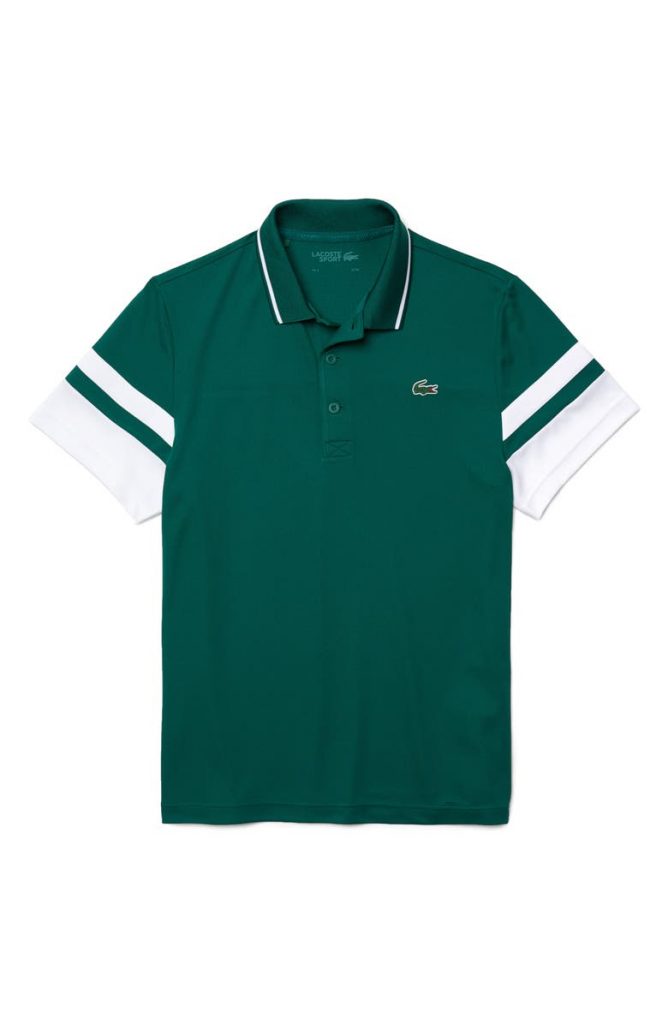
At the time, he felt that the tennis attire of the day was too cumbersome and uncomfortable. So he designed a white, short-sleeved, loosely-knit piqué cotton. He then added a logo of a crocodile on it, which was his tennis nickname. The Polo shirt was born.
45. Hypodermic needle by Charles Pravaz – 1853
While ancient Greeks and Romans knew of injections as a method of medicinal delivery, it would be quite a while before precise dosage was possible.
Charles Pravaz, a French orthopedic surgeon in Lyon, designed a hypodermic needle measuring 3 cm (1.18 in) long and 5 mm (0.2 in) in diameter.
Pravaz died before he could publish an account of his invention, but another French surgeon, L. J. Béhier, would make Pravaz’s discovery known all across the world.
46. Triathlon in Joinville-le-Pont – 1920s
In the 1920s, a new competition became popular in France. The earliest events were in Joinville-le-Pont, a suburb of Paris, with the newspaper L’Auto advertising races consisting of a 3 km run, a 12 km bike ride, and the crossing of the river Marne, all without a break.
“Les Trois Sports” as it was called, would soon be seen in La Rochelle, Marseille, and all over France and the world.
47. Bone Marrow Transplant by Georges Mathé – 1959
In 1958, French oncologist Georges Mathé performed the first bone marrow graft between unrelated donors and hosts ever made in the world.
His patients were six Yugoslavian nuclear researchers who had been accidentally irradiated.
48. Ballet Shoes by Marie Camargo – 1720s
It was Sun King Louis XIV of France who made ballet popular, by founding the Royal Academy of Dance. However, at that time the standard women’s ballet shoe had heels.
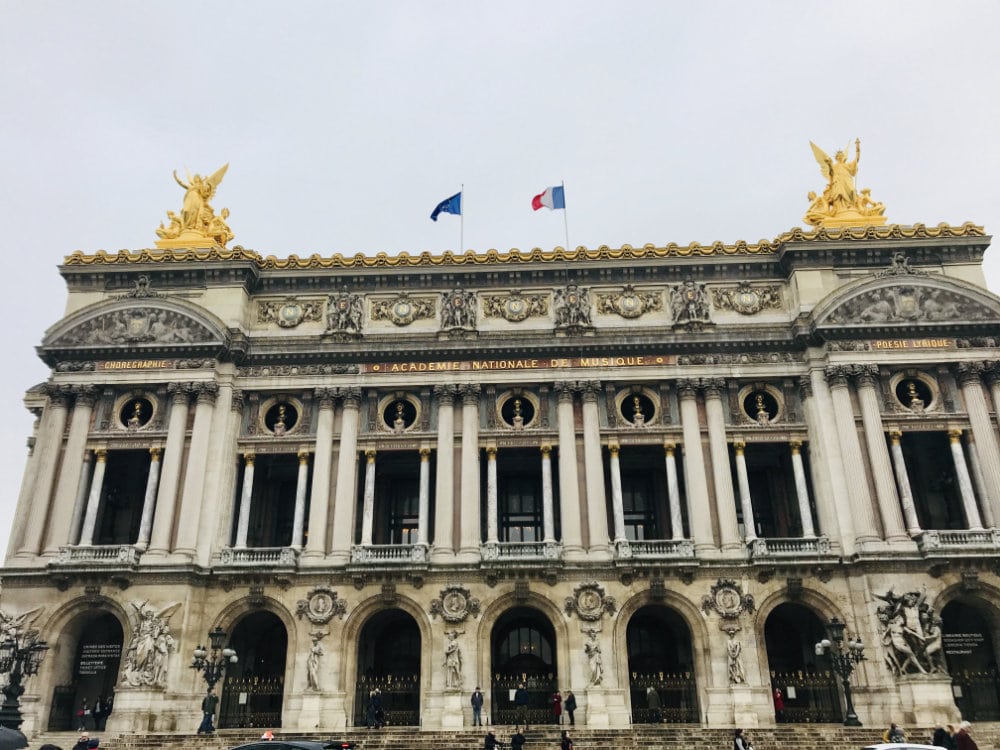
Mid 18th century dancer Marie Camargo of the Paris Opéra Ballet was the first to wear a non-heeled shoe.
Later in 1947, Rose Repetto created her first ballet shoes for her son, and soon thereafter opened a workshop and a store near the National Opera of Paris.
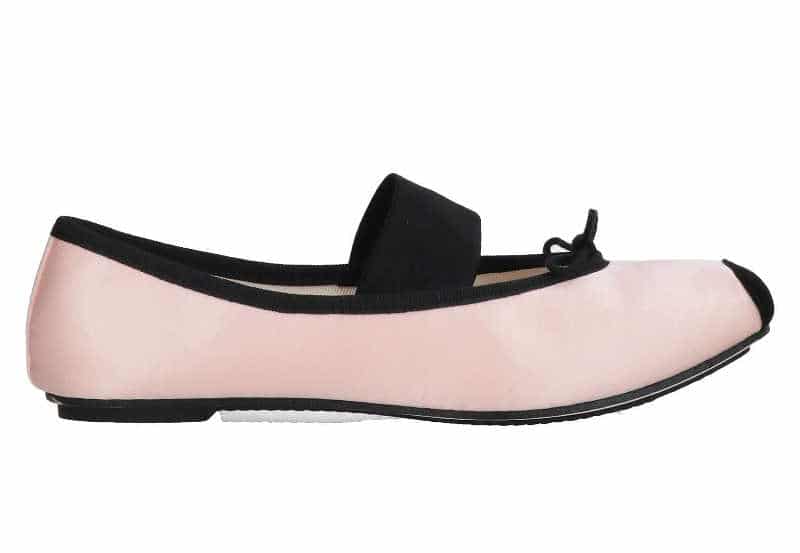
Repetto ballet shoes became world-famous after their “Cendrillon” ballerina flat made for French actress Brigitte Bardot’s 1956 film Et Dieu… créa la femme.
49. Inflatable tyres by Édouard Michelin – 1895
Although intending to be an artist, he entered into the family business of making tires. In 1889, he improved greatly on the design of the pneumatic tire for bicycles, making tires easier to change and repair.
The company Michelin Tires quickly adapted his inflatable tires for use on motor vehicles, and France became a powerhouse in car and tire manufacturing.
And if you are wondering, yes the Michelin Tire company also invented the French Michelin-starred system for restaurants.
50. Modern pencil by Nicolas-Jacques Conté – 1795
Nicolas-Jacques Conté was a French painter, army officer, and inventor of the modern pencil.
It was soon after the French Revolution, and the country was under economic blockade and unable to import graphite from Great Britain. Conté was asked to create a pencil that did not rely on foreign imports.

He came up with the idea of mixing powdered graphite with clay and pressing the material between two half-cylinders of wood, forming the modern pencil. He also invented the conté crayon named after him, a hard pastel crayon used by artists.
51. Neonatal intensive care unit by Étienne Stéphane Tarnier – 1881
French obstetrician Stéphane Étienne Tarnier became the savior of French mothers and their premature infants. Interested in their treatment and well-being, he realized that keeping a constant temperature was not enough.
He realized that isolation, hygiene, appropriate feeding, and a warm, humid environment were also necessary. Inspired by a device used to incubate poultry, Tarnier created prototypes of infant incubators for the Paris Maternité in 1881. Today, many an infant around the world has survived because of his invention.
52. Semaphore Optical telegraph by Claude Chappe
Claude Chappe was a French inventor who in 1792 demonstrated a practical semaphore telegraph system that eventually spanned all of France.
His system consisted of a series of towers, each within line of sight of others, each with cross-arms on pivots that could be placed in various positions. The operator in a tower moved the arms to a sequence of positions, spelling out text messages in semaphore code.
This was the first telecommunications system, before the electric telegraph and eventually telephones were invented.

If you enjoyed that article, you may like to read about other famous French people and more facts about France. A bientôt!


